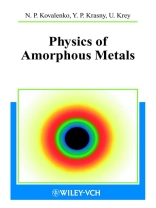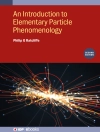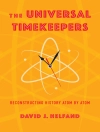The discovery of bulk metallic glasses has led to a large increase in the industrial importance of amorphous metals, and this is expected to continue. This book is the first to describe the theoretical physics of amorphous metals, including the important theoretical development of the last 20 years.
The renowned authors stress the universal aspects in their description of the phonon or magnon low-energy excitations in the amorphous metals, e.g. concerning the remarkable consequences of the properties of these excitations for the thermodynamics at low and intermediate temperatures. Tunneling excitations – another universal aspect of amorphous systems and responsible for many of their properties – is also intensively treated. Although the book is focused on analytical approaches, it also describes the numerical calculation of the atomic structure, the electronic excitations, and the itinerant magnetic properties of amorphous metallic alloys, while considering modern applications.
While both theorists and experimentalist interested in amorphous metals will profit from this book, it will also be useful supplementary reading in courses on solid-state physics and material sciences.
Tabla de materias
Introduction
On the structure of amorphous metals
The pseudopotential method
Atomic properties of amorphous metals. Low-energy excitations
Magnetic properties of amorphous metals
Superconductivity of glassy metals
Conclusion
Sobre el autor
1. Prof. Dr. Nikolai P. Kovalenko, Vice rector, State University of Odessa, Ukraine
2. Prof. Dr. Yuri P. Krasny, University of Opole, Poland
The authors N.P. Kovalenko and Yu.P. Krasny are working – among other topics – on the theory of Liquid and Amorphous Metals and have published a book on ‘Statistical Theory of Liquid Metals’ (in Russian, with S.A. Triger, Nauka, Moscow 1990).
3. Prof. Dr. Uwe Krey, Institute of Physics II, University of Regensburg
Well known, outstandig theoretical physicist. He is working in the fields of Statistical Mechanics, Magnetic and Electronic Properties of Disordered or Amorphous Solids and made a great contribution to his field. He has written a book ‘Introduction to phase transitions and critical phenomena’ (with W. Gebhardt, Vieweg 1980), which was translated into Japanese and updated (2nd edition) with S. Komura (Yoshioka Shoten, Tokyo 1992).












